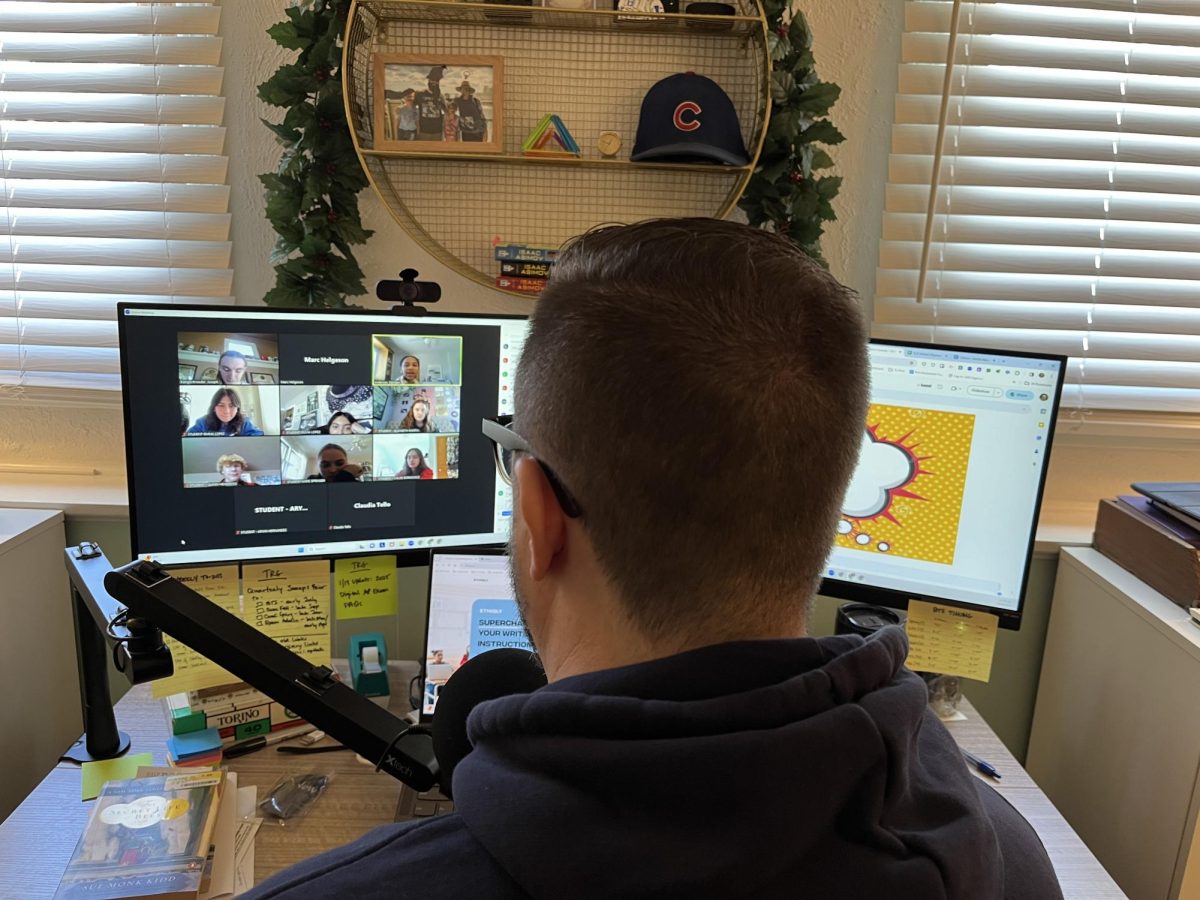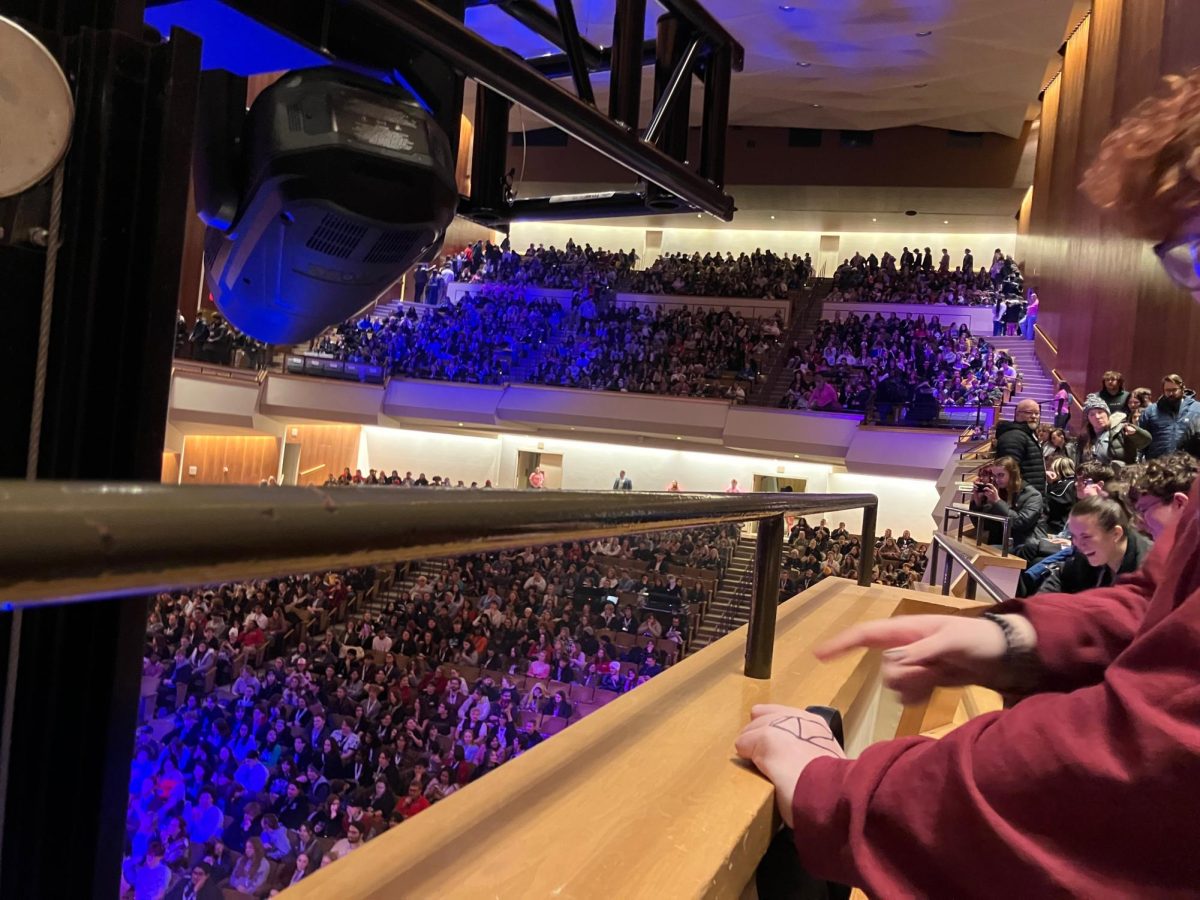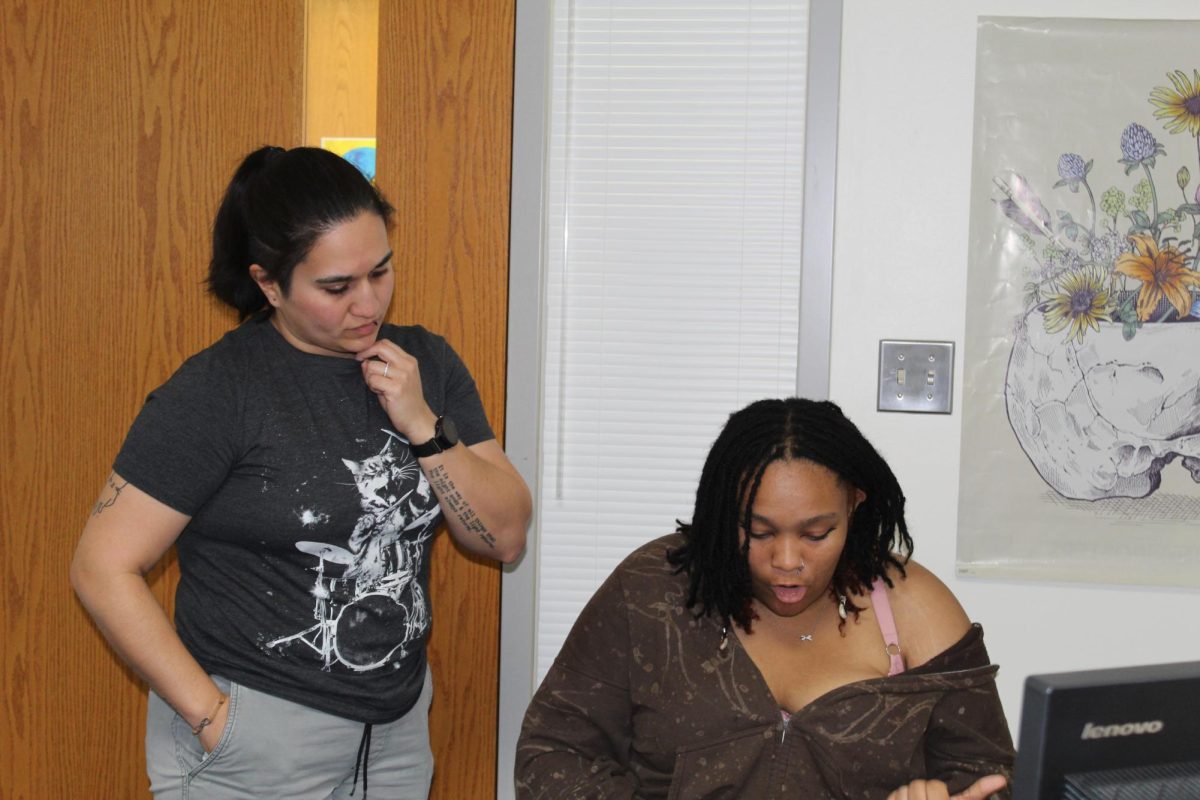The entire Clarion staff contributed to the ideas discussed in this editorial.
The COVID-19 pandemic reconditioned the way education is handled as Zoom classes and virtual learning have become the norm. Although the pandemic is now over, the effects of it still linger; perhaps most notable for students is the change in emergency days, commonly known as snow days, with the introduction of an online learning day in replacement. This new form of snow day has sparked debates regarding the effectiveness of holding online school during extreme weather.
Online snow days have technically been an option since before the pandemic, according to the Illinois State Board of Education; however, they have only recently become popularized after exposure to virtual learning during the pandemic. Instead of declaring an emergency day with no school, districts can opt to have a virtual school day, an alternative that has been increasingly used across the country in the past few years. In Illinois, five e-learning days are allowed—the same number of days permitted for emergency days per year. Districts that wish to implement a potential e-learning system must submit their plan to a hearing during a school board meeting to be approved by the regional office of education.
When debating the benefits of an e-learning day or a traditional snow day, learning quality is also a crucial aspect to consider. While some may be able to adapt well to virtual learning, there are others who struggle to maintain focus and motivation while attempting to learn in their home environment. The isolation from peers while learning can be the primary difficulty for many that is unable to be fixed during a day of virtual learning. E-learning days also disrupt teachers’ lesson plans, and the shortened periods can often lead to what feels like busy work for students.
Virtual snow days also disproportionately impact multi-person homes. For those with many people in one house, e-learning days often lead to overtaxed WiFi, which leads to unnecessary stress, attendance complications, and a disruption in the quality of learning that could be achieved. Similarly, high school closures coincide with elementary and middle schools being closed, which can leave some students in charge of caring for younger siblings or household members. These responsibilities can then become catalysts for falling behind and having to make up work from a virtual learning day, which feels counterproductive to its purpose. These students should be a central consideration when deciding between online learning days and the snow days of before.
On a broader scale, e-learning days in lieu of snow days are not productive for most young children. Elementary schools have begun to implement online learning snow days, following middle and high schools. While understandable for older ages, young children often do not have the attention span to sit in front of a computer on a Zoom call, causing stress for parents and teachers alike and preventing true learning for the child. Socialization is as important for children as the fundamental knowledge provided by school, and these interactions are more likely to be achieved with a complete day off instead of one online.
There is also something to be said for the magic of snow days. While we may not like adding a day on in the summer, the joy of waking up to a day without school in the cold winter is unmatched and an integral part of all our childhoods. The idea that this generation of children will be missing these memories is cause enough for some to push for the snow days of the past.
However, it also must be considered that the emergency virtual learning days are just that: days. The extent of e-learning school days is limited, and the likelihood of having multiple consecutive days is low, making it seem incomparable to the days of e-learning during the global pandemic. It can also still seem like a break because of the late start, early dismissal, and shortened periods for many students, and the absence of an e-learning day may not make up for the addition of a day in the summer.
As a compromise, a possibility could be a certain amount of true snow days, two for example, and any that followed would need to be online. This would maintain some of the joy of snow days while not disrupting the district’s schedule to an extreme. Although there are arguments for and against the presence of virtual learning snow days in today’s education, it is up to us as individuals to adapt to the changes that we are faced with. As the pandemic has shown, we are not prepared for everything, and it is crucial that, as the next generation, we are able to acclimate to whatever changes are ahead.














Melody.Blackwell • Nov 8, 2024 at 9:03 am
This article help me a lot and it help me understand why e-learning days are not beneficial